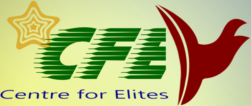The psychomotor domain has to do with muscular activities. It deals with such activities which involve the use of the limbs (hand) or the whole of the body. These tasks are inherent in human beings and normally should develop naturally.

Can you think of such abilities or skills. Consider the skills in running, walking, swimming, jumping, eating, playing, throwing, etc. One would say that these skills are material.
Yet, for affective performance or high level performance of a wide variety of tasks, it is necessary for educators to develop various skills of more complex nature in addition to the inherent ones. For instance, more complex skills can be developed through learning in such areas as driving, drawing, sports, etc. like the cognitive and affective, psychomotor domain is sub divided into hierarchical levels. From the lowest, we have (i) Reflex movements (ii) Basic Fundamental movements (iii) Perceptual abilities (iv) Physical abilities (v) Skilled movements and (vi) Non-discursive communication. Now let us take them one after the other and discuss them briefly.
Reflex Movements
At the lowest level of the psychomotor domain is the reflex movements which every normal human being should be able to make. The movements are all natural, except where the case is abnormal, in which case it may demand therapy programmes.
Apart from the abnormal situations, educators are not concerned with these movements. Now let us think of some examples.
Can you mention some of them? Your mind may have gone to; the twinkling of the eyes, trying to dodge a blow or something thrown at you, jumping up when there is danger, swallowing things, urinating or stooling by a child, etc.
Basic Fundamental Movements
Like the case of reflex movements, these are basic movements which are natural. Educators have little or nothing to do with them, except in an abnormal cases where special educators step in to assist. There are three sub-categories at this stage. These are:
- Locomotor movement: which involves movements of the body from place to place such as crawling, walking, leaping, jumping etc.
- Non-locomotor movements: which involves body movements that do not involve moving from one place to another. These include muscular movements, wriggling of the trunk, head and any other part of the body. They also include turning, twisting etc of the body.
- Manipulative movements: which involves the use of the hands or limbs to move things to control things etc.
Perceptual abilities
This has to do with the senses and their developments. It means therefore that educators have not much to do here except to direct the use of these sense in association with certain conditions. Perceptual abilities are concerned with the ability of the individuals to perceive and distinguish things using the senses. Such individuals recognise and compare things by physically tasting, smelling, seeing, hearing and touching. You can identify the sense organs associated with these activities. With the use of particular taste, smell, sound, appearance and feeling, you can associate and understand certain objects or situations will and feelings in your mind. These senses with now help you to determine conditions and necessary course of action.
Physical abilities
These abilities fall in the area of health and physical education. You know that in athletics and games or sports in general, you need physical abilities and that these abilities can be developed into varying degrees of perfection with the help of practices. This is why sports men and women always practice in other to improve on their skills of endurance, strength, flexibility and agility. For instance, if you are a goal keeper, you will need to improve on these skills to perform.
Skilled Movements and psychomotor domain
This is a higher ability than the physical abilities. Once you have acquired the physical abilities, you now apply various types of these physical abilities in making or creating things. You can combine skills in manipulative, endurance and flexibility in writing and drawing. You can combine the neuromuscular movements together with flexibility to help you in drawing. An individual can combine strength, endurance, flexibility and manipulative movements in activities like combat sports such as wrestling, boxing, karate, tackwando, Judoka, weight lifting, etc.
For skills like drumming, typing or playing the organ or the keyboard in music, you will need a combination of manipulative movements and some perceptive abilities and flexibility.
There are three sub-levels of the skilled movements. These are simple adaptive skills, compound adaptive skills and complex adaptive skills.
Non-discursive Communication
This is the highest level which demands a combination of all the lower levels to reach a high degree of expertise.
For instance, one can use the keyboard to play vibes and sounds but it requires a good deal of training, practice and ability to combine certain movements of the fingers in order to relay a message or to play a classical music like that of Handel.
At the same time, it will also require certain level of perceptive abilities in order to be able to interpret or decode the messages or the music. It means that both the player and interpreter must be operating at the same level of skills.
Every body that is normal can move his limbs and legs. But you must have some level of training, practice and the ability to combine a variety of movements and some perceptive abilities in order to do diving, swimming, typing, driving, cycling etc.
At the same time, you will also need these in other to read or interpret different writings, long or shorthand. You need them to be able to manipulate your computer set accurately to give you what you want. You need training to be able to browse on the Internet and to derive maximum benefits from the use of modern information and communication technologies.
There are two sub-levels of the non-discursive communication. They are expressive movement and interpretive movement.
Discover more from Centre for Elites
Subscribe to get the latest posts sent to your email.
